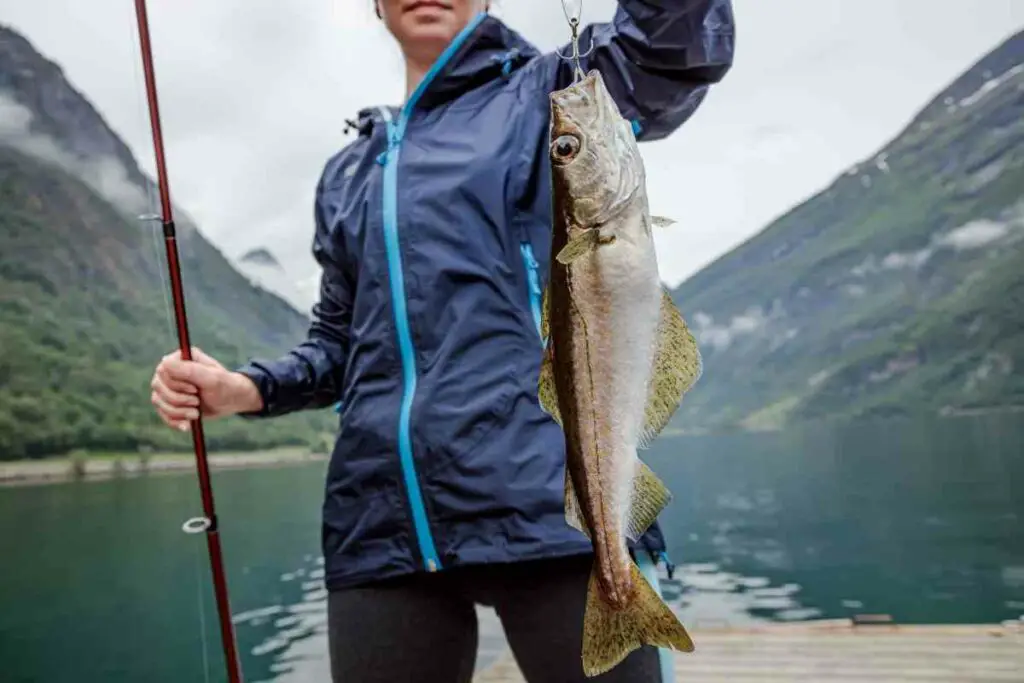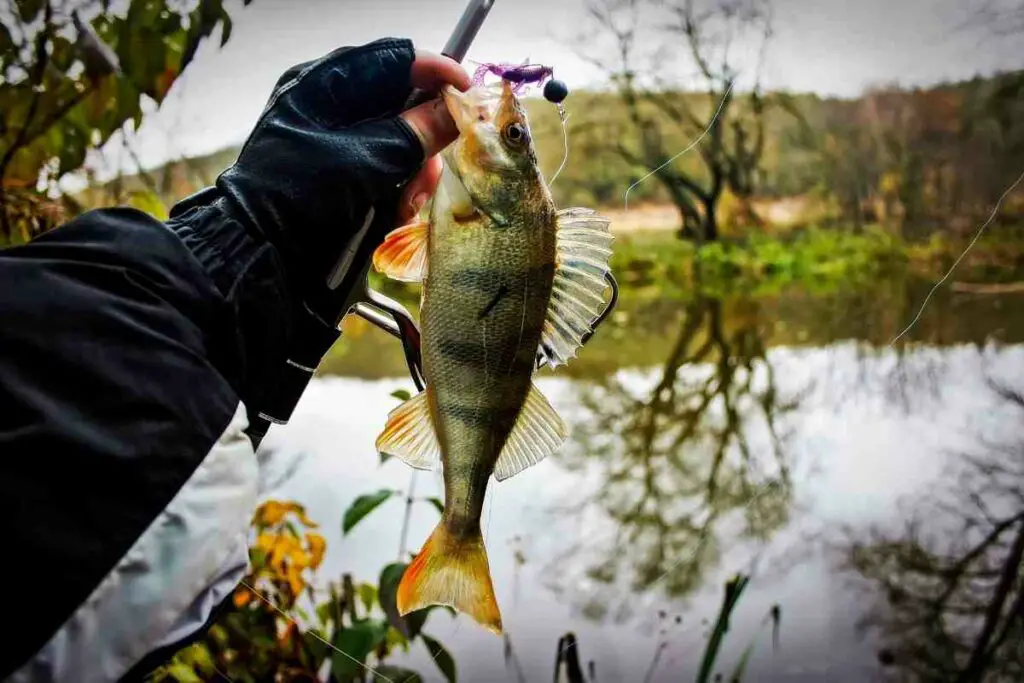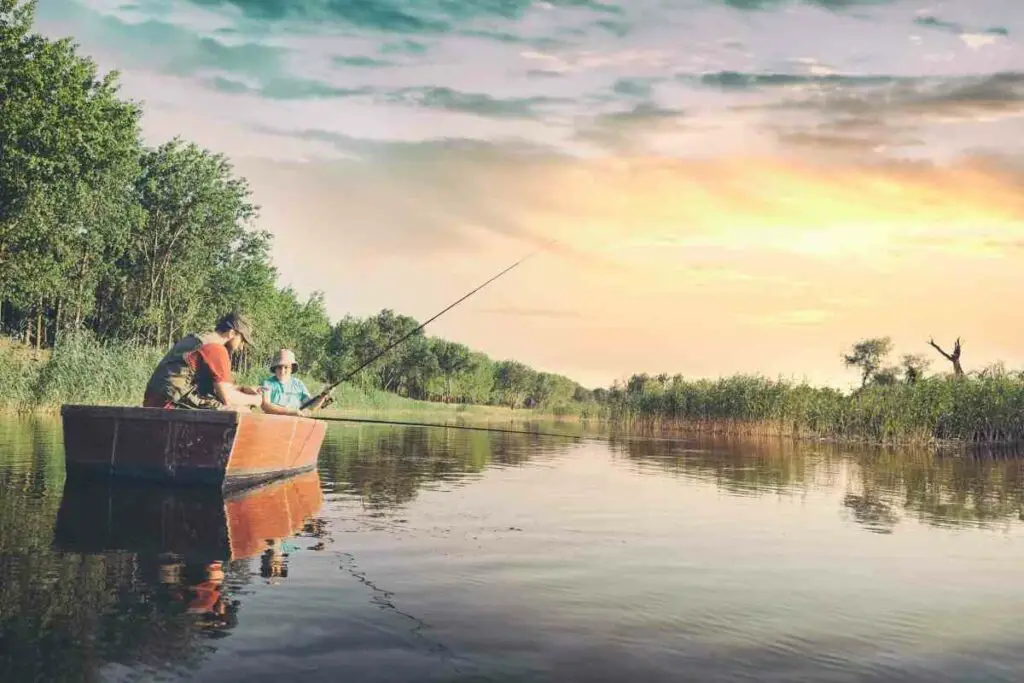
Wind affects fish location and behavior. Thus, wind aspects like speed and direction will dictate whether to fish, where to fish, and how and when fish feed.
West and South winds improve fishing by providing ideal weather that activates the need to feed, drawing them closer to the surface.
Contrary, winds from the East and north are linked to cold fronts and stormy weathers that chase fish into hiding deep in the water and boaters to avoid fishing due to their safety.
Table of Contents
Choosing the Perfect Location
Under ideal weather, the wind blowing across a water body helps narrow your choice of locations down to a few noticeable spots.
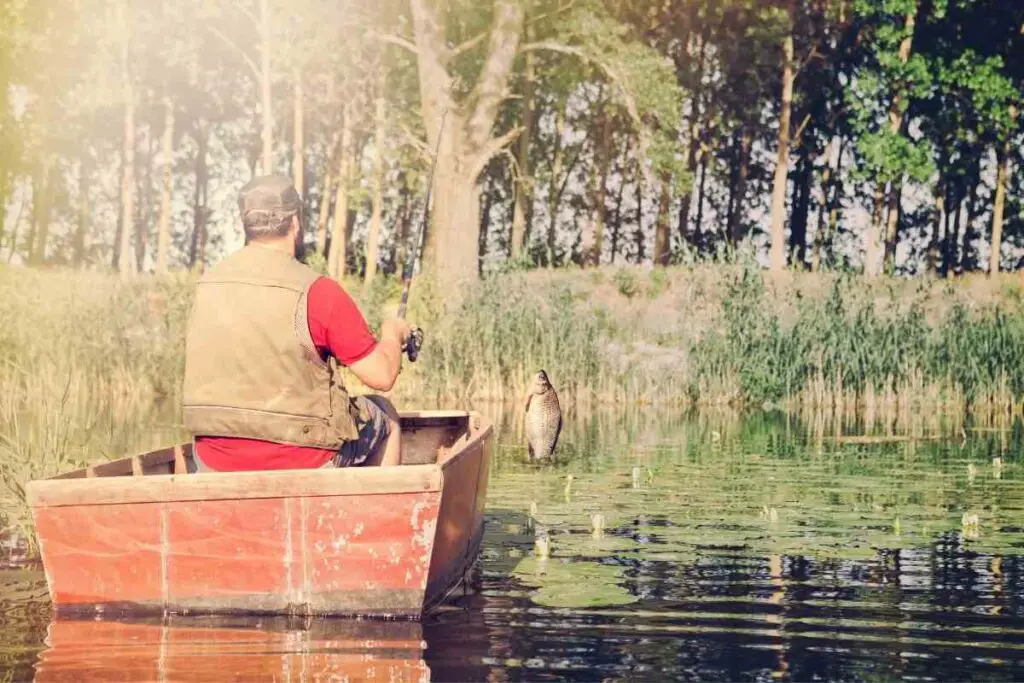
It stirs up food, hauling fish off the bottom, putting them into relatively shallow water, and group up around the food where boaters can easily catch them.
Of course, too much wind makes it challenging to fish. Casting becomes less effective, the boat may drift a lot, and anchoring may be complicated.
As a guide, this article has laid out some techniques to position the boat, anchor, and cast in windy conditions.
How Wind Direction Affects Fishing
The wind has a significant impact on fishing, but it depends on the wind’s direction.
Additionally, fishing in windy conditions can be successful with the right fishing gear, fishing set up, boat size, and at the ideal location.
To better understand how wind direction affects fishing, we must first comprehend the effect of wind on water and fish behavior.
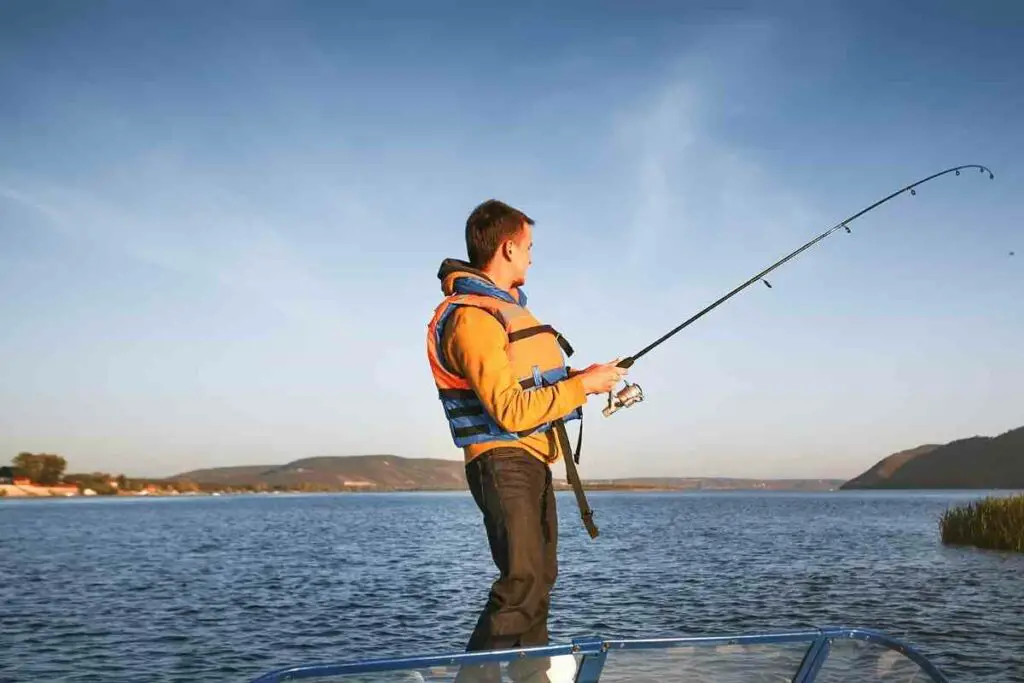
The most apparent way wind impacts fishing is through waves and currents. As the wind blows along the water’s surface it creates friction, which causes waves and currents.
As a result, the stronger it blows, the higher the current due to greater friction.
Fish tend to hunt actively when it is windy. The currents and waves cause a good deal of surface agitation which blows up the bottom of the food chain through the water, bringing insects and all sorts of vegetation to the shore, attracting fish closer to the surface to feed.
You are likely to fetch a great catch as fish tend to like the wind as it reduces the visibility of fish underwater, so fish can’t detect boats and anglers nor readily see the flaws in your baits.
When the wind blows, the ripples and waves refract the light. This blocks the sun, causing the fish to swim closer to the surface.
Additionally, fish like to swim against the current than with it because they can maneuver easily.
Since currents are directly influenced by wind, you can predict certain areas where the fish will be.
The direction in which wind is blowing is very critical when fishing as it determines a specific area where fish will group up.
Wind blowing in a given direction causes the water to go in that direction. Wind can blow current offshore into the water or through the water to windswept shorelines.
Which is The Best Wind Direction To Fish, North, South, West, or East?
Successful fishing depends on where the wind is coming from.
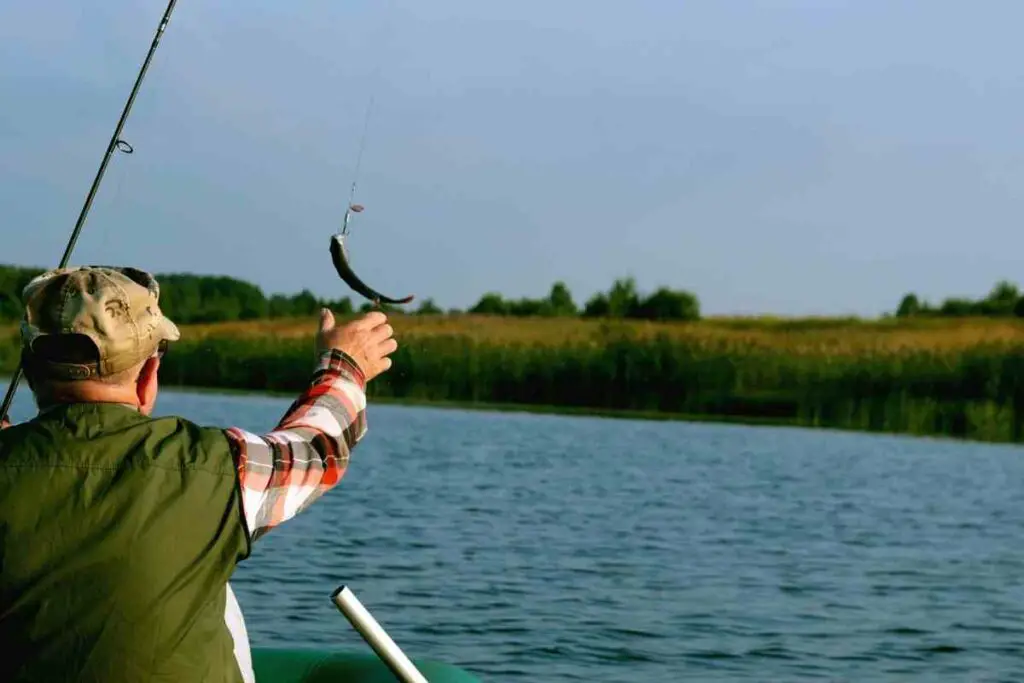
Winds blowing from the south and west are good for fishing as they create ideal fishing environments.
They come with warmer temperatures and more humid conditions, which activate fish’s appetite.
On the other hand, East and North winds signal bad or stormy weather.
East and north winds are connected to drops in water temperature, cooler air, and low barometric pressure. This causes fish stomachs to shrink, reducing their need to hunt and feed, signaling fish to run and hide for cover.
The cold air and big waves make most boaters think twice about going out.
Tips on How to Successfully Fish in Windy Conditions
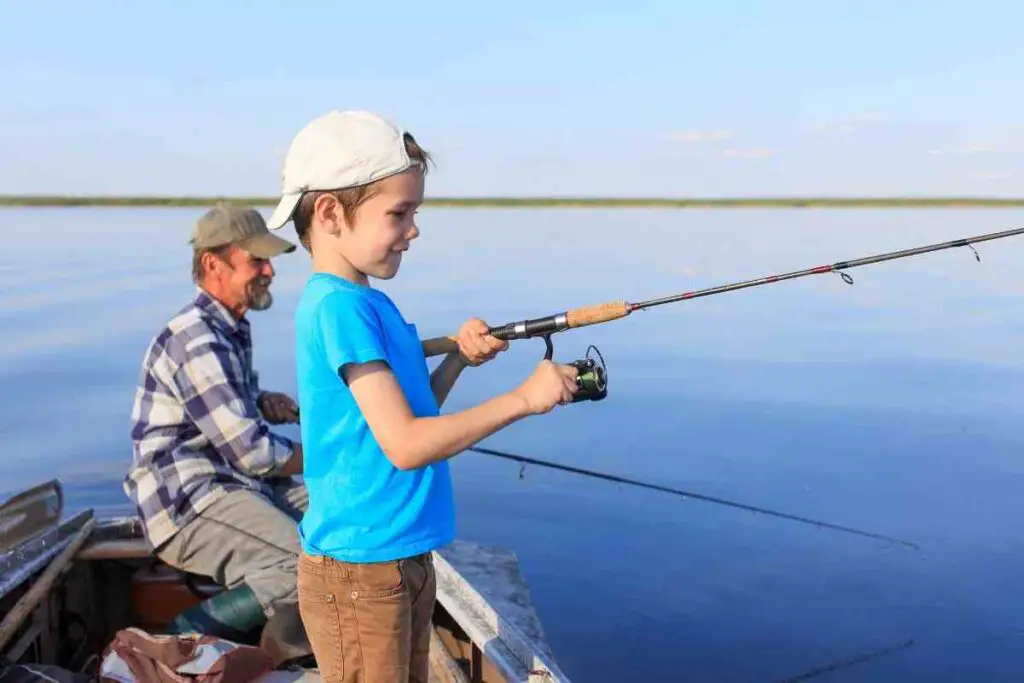
Effective Boat Positioning For Successful Fishing
Wind direction will dictate where and how you will be able to fish.
When it is slightly windy, you can position your boat anywhere. But a strong wind may make it hard to use your boat like you usually do.
Wind speeds below 23 knots are best for fishing. If it exceeds this it will be impossible for you to feel when a fish bites your hook.
Also, casting becomes complicated and dangerous. Your boat might get smashed against rocks or even overturn.
Before positioning the boat, first, determine how the wind and current influence your boat.
This way you won’t have to fight the wind but will use it to your advantage. Ensure the boat’s positioning will adjust with the wind.
When fishing, bait should drift from left to right and vice versa with the current in front of you. The baitfish shouldn’t drift towards you or away from the boat.
Bait drifting in your direction can create slack in the line, possibly causing missed strikes.
On the other hand, when bait moves away from the boat, you will eventually run out of line and surf on top of the current.
Creative Ideas For Anchoring In Wind
Wind direction, strong winds, and currents may push the boat around, making it hard to anchor.
Therefore, you need a good anchor and an ideal spot to keep your boat in place as you fish.

When positioning the boat, you can use one or two anchors. However, depending on the wind speed, one anchor might not be enough.
This is because the ship can rotate on the axis of the anchor point in the strong wind. Before anchoring, ensure the boat adjust to the wind direction.
On the other hand, using two anchors will make the ship more secure as it is not prone to swing on the axis of a single anchor.
It is important to find a spot that is safe to anchor the boat.
Under windy conditions, a good anchor point should be away from hazardous objects like rocks. Also, ensure the type of boat you are using can anchor safely.
Once you get to the spot, place the engine in neutral to determine the effect of current on the ship. Wait for the boat to come to a stop, then slowly lower the anchor.
Casting Tips When Fishing In The Wind
Besides blowing food and other bait in the right direction, wind direction may affect how you can cast your rod.
When the wind is blowing in a particular direction, casting may be more challenging, thus negatively impacting your fishing experience.
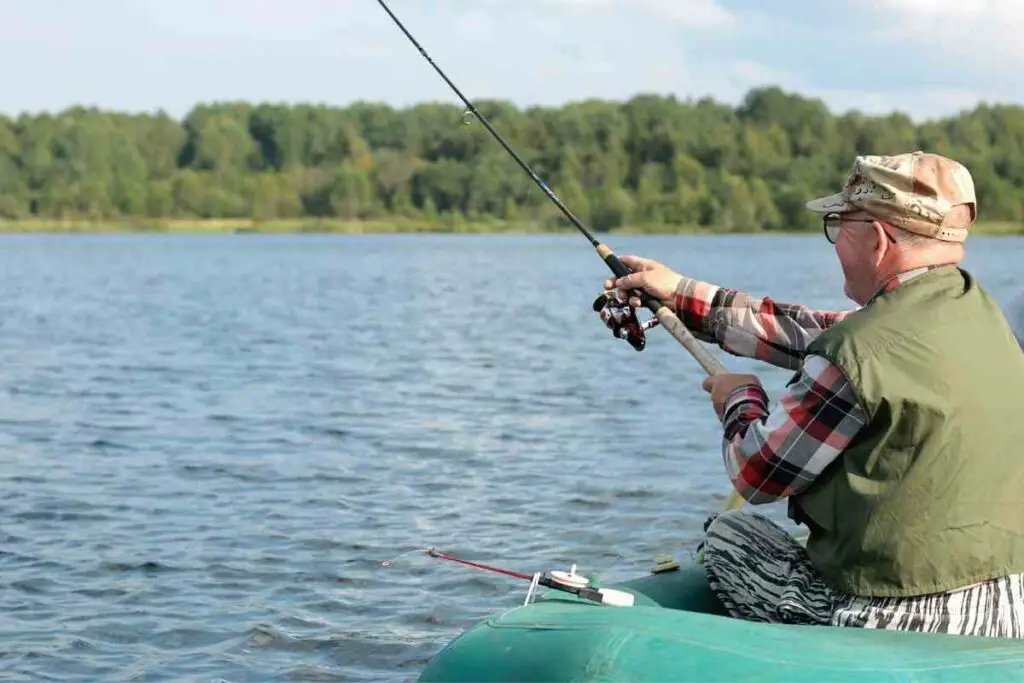
When casting, make sure the wind is coming from behind you and not blowing in your face. Casting into the wind gets you a lot less distance out of each cast.
Moreover, the chances are that your lure and line will get wind knots and backlashes, making it hard fishing.
However, if you cast with the wind, that wind will carry your lure much further than you could manage to throw it independently.
Casting with the wind can also be disadvantageous if you’re attempting to cast to a specific spot, as the wind might be a bit unpredictable.
Note: With the proper technique and heavy lure, casting against the wind is possible;- however, it’s still not recommended to throw against the wind.
You may as well adapt to casting to windy conditions by cranking down on the spool tension knob and braking system without getting backlash.
You can also try a roll cast instead of using an overhead cast which swings more like a golf club to keep the bait flying low across the water, where the strong wind can’t grab it.
Conclusion
Wind direction is an ally when fishing as it draws fish to move against the current towards food, making it easier to locate them.
However, it can become a deterrent if you fail to position your boat correctly, know how to cast and anchor in different wind directions.
Spotting fish based on the wind direction will help you firmly anchor your boat and take advantage of the wind direction by adjusting the boat’s positioning with the wind.
So the wind won’t push it around, keeping your boat in casting range without getting too close and spooking the fish with your boat.
Also, don’t cast into the wind as you’ll get less distance and increase your chances of tangling your line.
